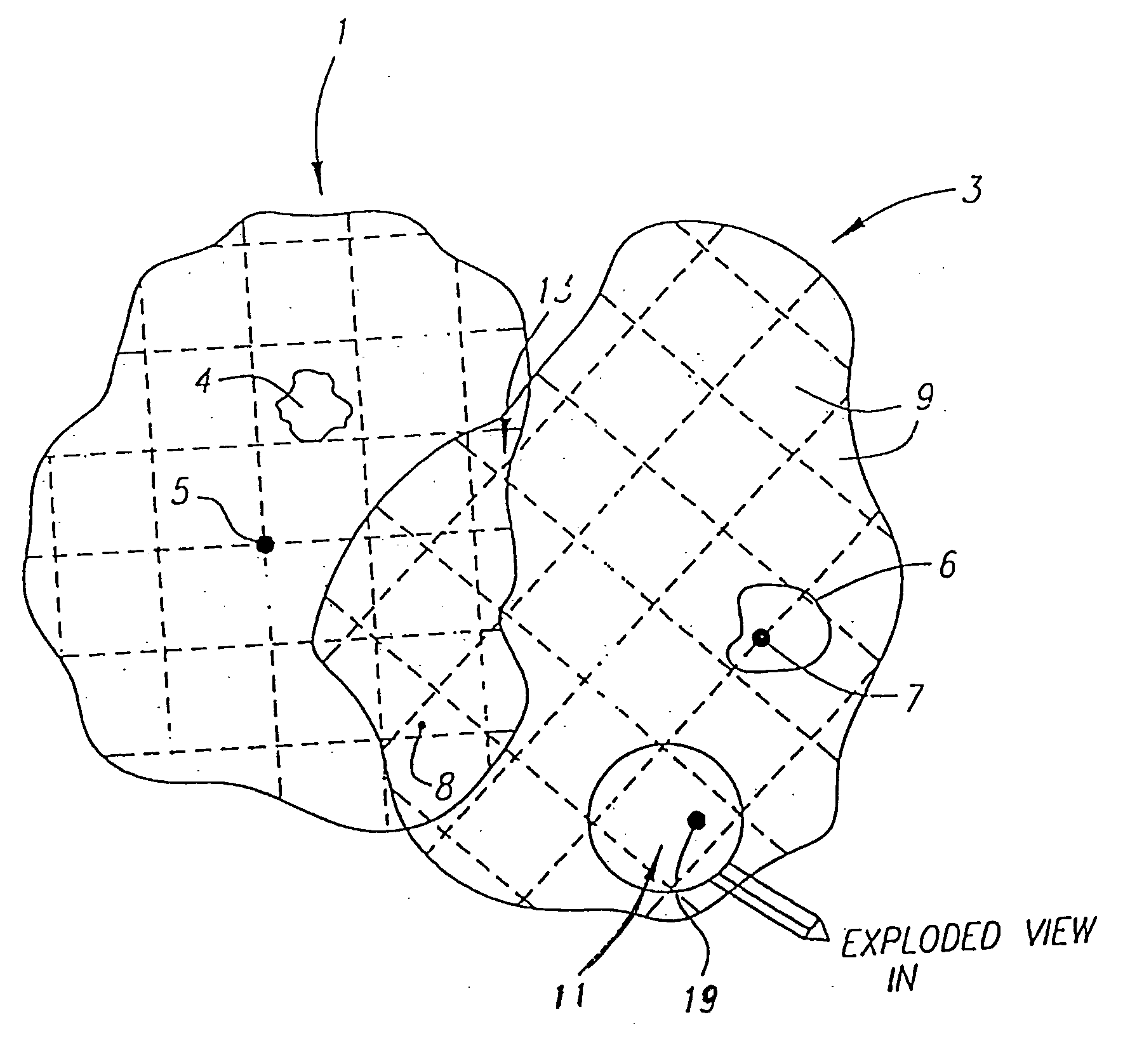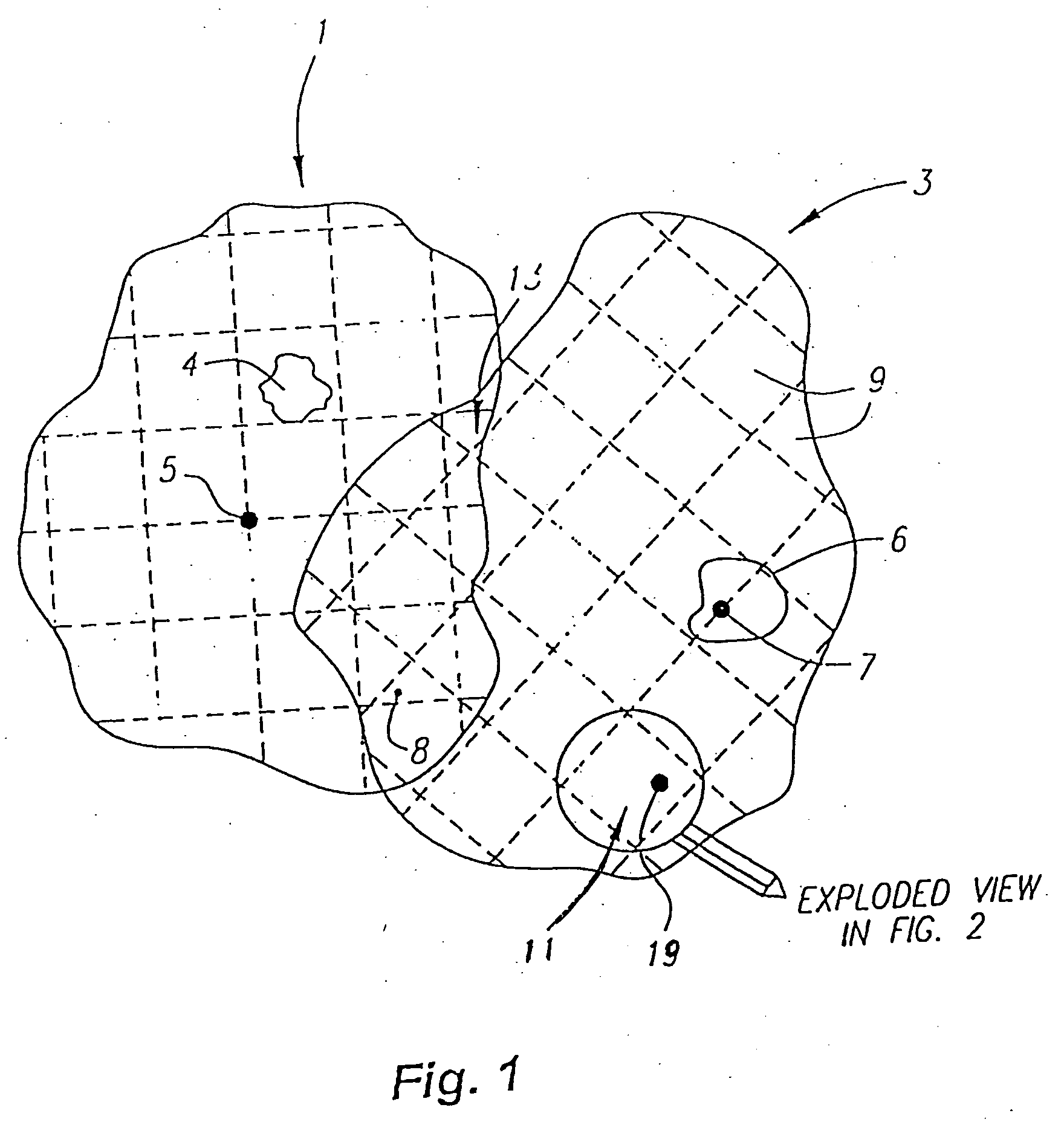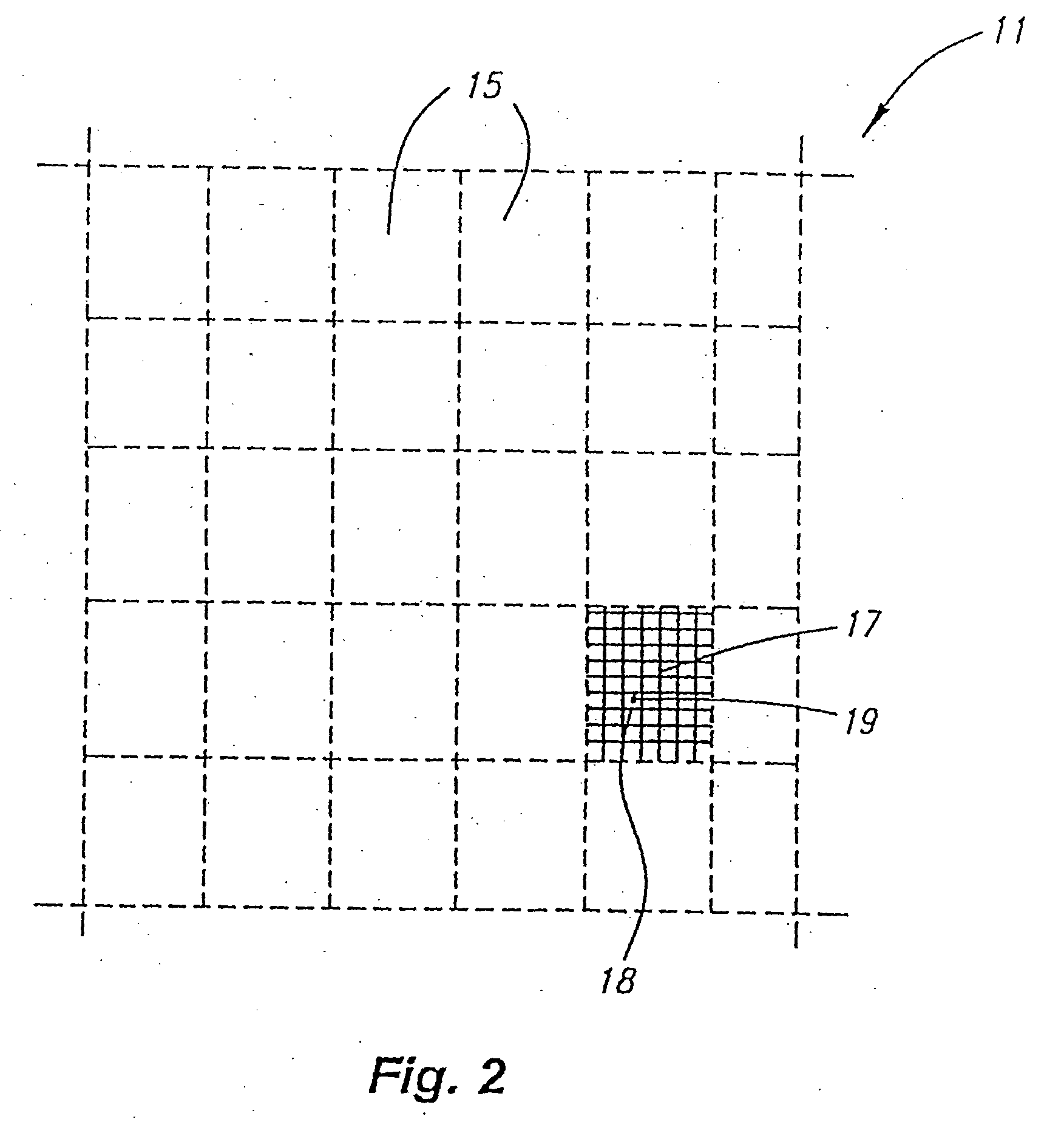Unified geographic database and method of creating, maintaining and using the same
a geographic database and database technology, applied in the field of unified geographic database, can solve the problems of disparate sources continuously in flux, no universal clearinghouse method or system of acquiring and distributing location-based basic, enhanced and/or real-time information, etc., and achieve the effect of increasing the resolution
- Summary
- Abstract
- Description
- Claims
- Application Information
AI Technical Summary
Benefits of technology
Problems solved by technology
Method used
Image
Examples
example 1
A. EXAMPLE 1
[0076] Hierarchical Identifiers For Country, State / Province, City
[0077] The example assumes the existence of higher levels of hierarchical codes for identifying countries, states / provinces, and cities. The top level codes can be used, implied by context, or specifically ignored by the use of dots (periods) to make it clear how many codes have been omitted. A code of ‘US.CA.LA’ might be represented as ‘LA’, ‘ . . . LA’, or by ‘CA.LA’, depending on the geographic context or the need for clarity.
[0078] In all cases, upper level codes are dropped when the geographic context is clear, to prefix with dots (periods) when necessary to insure clarity, and to append lower levels to add precision.
[0079] Country Codes
[0080] Top level: two alpha character mnemonic (possibly based on Internet domain codes).
[0081] Examples: [0082] United States=US [0083] Australia=AU [0084] Canada=CA
[0085] State / Province Codes
[0086] Second level: two character mnemonics (advantageously based on ...
example 1a
B. EXAMPLE 1A
[0123] In addition to the example above which demonstrates one means for implementing the city grid, this example describes an alternative means for implementing the city grid based on the Transverse Mercator projection system.
[0124] In a preferred implementation a conventional map projection / coordinate system grid is selected. While Lambert Conformal Conic, Stereographic, or local tangent plane system might well be used, in this example, the Transverse Mercator (TM) projection is selected. The TM projection is preferred over other projections suitable for use in local mapping systems because it is most likely an available projection in many GIS and GPS platforms.
[0125] To make city centroid selection less contentious an issue, one preferably uses lists of centroids from the Digital Chart of The World (VMapO) or other sources and moves them to arbitrary points that are defined in controlled lists. In order to remove the slight differences in city centroids from differ...
example 2
C. EXAMPLE 2
[0148] In addition to the example above which demonstrates the logic and structure of the XYZ.12.34.56.78 format, this example describes the use of a grid format and ULA utilizing the XYZ.12.aa.34.aa format. The Country, State / Province, City and Proprietary Codes remain as described in the previous example, but the optional City Grid is structured differently. The grid code is still initially identified by a pair of numeric characters, and the city grid origin is defined at the ten minute of latitude and ten minute of longitude intersection nearest the city centroid as in the previous example. The definition of each grid and the false easting and northing, as well as the structure of the first grid level, is also as described in the preceding example.
[0149] The next lower level of the grid divides each numeric grid into a twenty by twenty grid (400 grid rectangles) area. East is always first, north is always second. The minimum is A from a character set consisting of AB...
PUM
 Login to View More
Login to View More Abstract
Description
Claims
Application Information
 Login to View More
Login to View More - R&D
- Intellectual Property
- Life Sciences
- Materials
- Tech Scout
- Unparalleled Data Quality
- Higher Quality Content
- 60% Fewer Hallucinations
Browse by: Latest US Patents, China's latest patents, Technical Efficacy Thesaurus, Application Domain, Technology Topic, Popular Technical Reports.
© 2025 PatSnap. All rights reserved.Legal|Privacy policy|Modern Slavery Act Transparency Statement|Sitemap|About US| Contact US: help@patsnap.com



